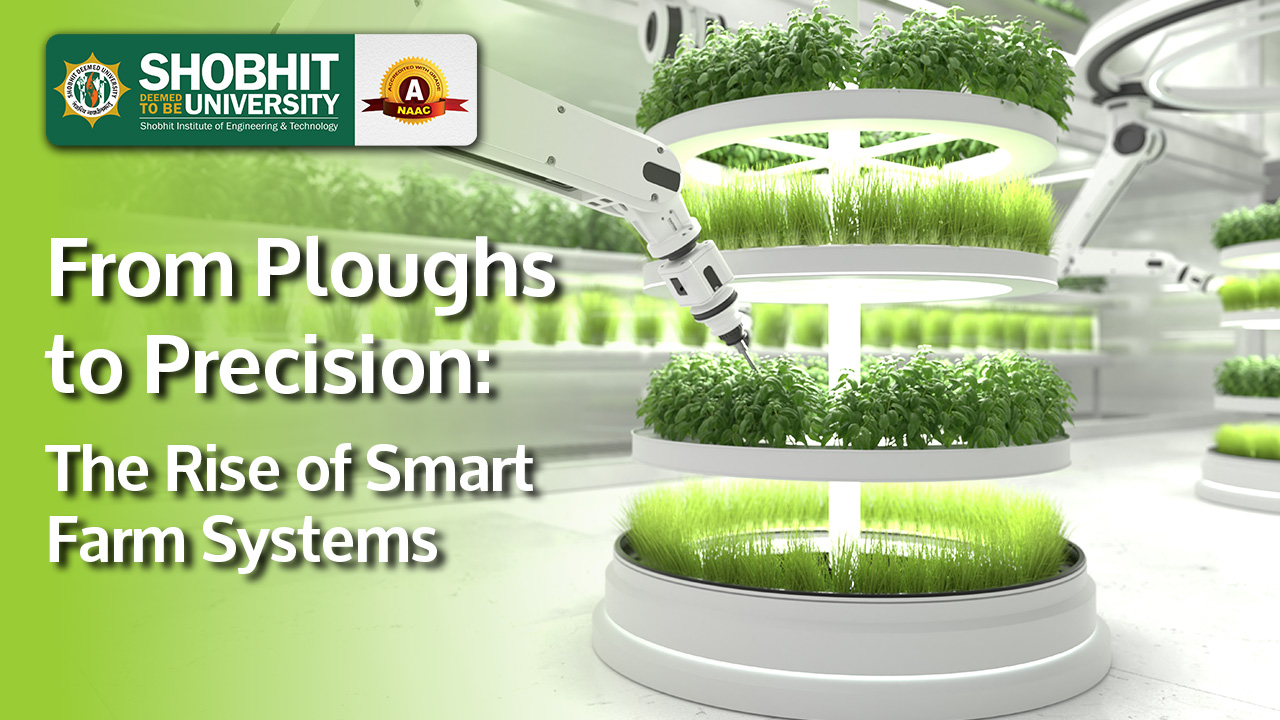
From Ploughs to Precision: The Rise of Smart Farm Systems
Agriculture has always been the backbone of human civilization. From the moment early humans first tilled the soil with simple wooden ploughs, farming has grown alongside societies, feeding billions and driving economies forward. Even today, agriculture contributes significantly to GDP in many countries — for example, it accounts for about 17–18% of India’s GDP and provides livelihoods to over 50% of the population.
But now, new challenges have emerged: climate change, shrinking farmland, soil degradation, labor shortages, and the urgent need to produce more food for a growing global population. Old tools alone cannot solve these modern problems. This is where Smart Farm Systems are transforming agriculture — turning traditional fields into high-tech, data-driven, sustainable production units.
Why Smart Farm Systems Matter?
Smart Farm Systems bring technology and modern science into farming. They help farmers tackle age-old challenges with new tools. Traditionally, farmers relied on weather patterns, local knowledge, and hard labor. But unpredictable rains, pest outbreaks, and poor soil conditions often reduced productivity and incomes.
Smart Farm Systems provide real-time information and automation. Farmers can now use soil sensors to measure moisture and nutrients, GPS-guided tractors to sow seeds with precision, drones to check crop health from above, and data analytics to plan harvests at the best possible time.
For example, a farmer who uses drip irrigation connected to smart soil sensors can save up to 40% more water compared to flood irrigation. Precision fertilizer application reduces costs and prevents harmful runoff into rivers and lakes. Smart farming reduces guesswork and puts science and data at the farmer’s fingertips — resulting in higher yields, better quality, and a healthier environment.
The Critical Role of Agricultural Engineering
At the core of Smart Farm Systems is Agricultural Engineering. Agricultural engineers combine knowledge of mechanical, electrical, civil, and computer engineering to solve problems on the farm. They design advanced machines such as self-driving tractors, robotic harvesters, and drone sprayers. They develop automated irrigation systems that deliver water drop by drop to the root zone. They build climate-controlled greenhouses for year-round cultivation, and they create post-harvest machinery to clean, grade, and package produce efficiently. Agricultural engineers also work on renewable energy solutions, like biogas plants and solar-powered pumps, to make farms more energy-efficient and reduce dependence on fossil fuels.
One example is precision seeding machines, which place seeds at the right depth and spacing, improving germination and saving seeds and fertilizer. Another is variable rate technology (VRT), which adjusts the amount of fertilizer or pesticide applied based on soil needs, saving money and reducing pollution.
Scope of Smart Farm Systems
The scope of Smart Farm Systems is vast and expanding every year as technology becomes cheaper and more user-friendly.
Key areas include:
Precision Agriculture:
Farmers can now divide fields into small zones and manage each zone based on its unique soil and crop needs.
Remote Sensing and GIS:
Drones and satellites help detect pests, diseases, and nutrient deficiencies early, often before they are visible to the naked eye.
Internet of Things (IoT):
Smart sensors collect data on soil moisture, temperature, humidity, and weather, and send alerts directly to a farmer’s phone.
Farm Robotics and Automation:
Robotic weeders, milking machines, and automatic sprayers reduce labor and increase efficiency.
Climate-Smart Practices:
Smart irrigation systems use data from sensors and weather forecasts to adjust water flow automatically, saving water during droughts and preventing overwatering.
Digital Marketing Platforms:
E-marketplaces help farmers sell directly to buyers, reducing middlemen and improving profit margins.
Did you know?
- In the USA, over 70% of large farms use some form of precision agriculture.
- In India, pilot projects show that using drones for pesticide spraying can reduce chemical use by up to 30%.
- Smart sensors can cut fertilizer waste by 20–40%, protecting rivers from harmful runoff.
| Technology | Description | Specification | Key Features | Main Benefit |
|---|---|---|---|---|
|
GPS-Enabled Tractor |
Tractor with GPS for auto-steering and precision ploughing |
Accuracy: ±2.5 cm with RTK GPS |
Auto-steer, path correction, fuel efficiency |
Saves fuel & time; precise sowing & ploughing |
|
Soil Moisture Sensor |
Measures soil moisture at different depths |
Range: 0–100% VWC; Depth: 5–120 cm |
Wireless, real-time data, multi-depth probes |
Saves water; avoids over/under-irrigation |
|
Agricultural Drone |
Drone for aerial monitoring, spraying, and mapping |
Flight Time: 20–30 min; Coverage: 5–10 ha/hour |
HD camera, GPS mapping, remote control, AI image analysis |
Early problem detection; efficient spraying |
|
Smart Irrigation System |
Automated drip/sprinkler irrigation linked to sensors & weather |
Water Savings: Up to 40% |
Auto valve control, weather sync, mobile alerts |
Reduces water use; boosts crop health |
|
Farm Management Software |
Cloud/mobile app for planning, monitoring, and reporting |
Real-time dashboards; multi-device support |
Data analytics, mobile-friendly, weather integration |
Better decisions; easy record-keeping |
Smart farming is not just for big farms. Many governments and startups are developing low-cost sensors, mobile apps, and farmer training programs so that small and marginal farmers can also benefit.
Conclusion
From simple wooden ploughs to AI-driven tractors and satellite data, agriculture has evolved dramatically. Smart Farm Systems, backed by the innovation of Agricultural Engineering, are the future of farming — they help produce more food, use fewer resources, and protect the environment for future generations. By investing in Smart Farm Systems today, we build a farming system that is profitable, climate-smart, and sustainable.
